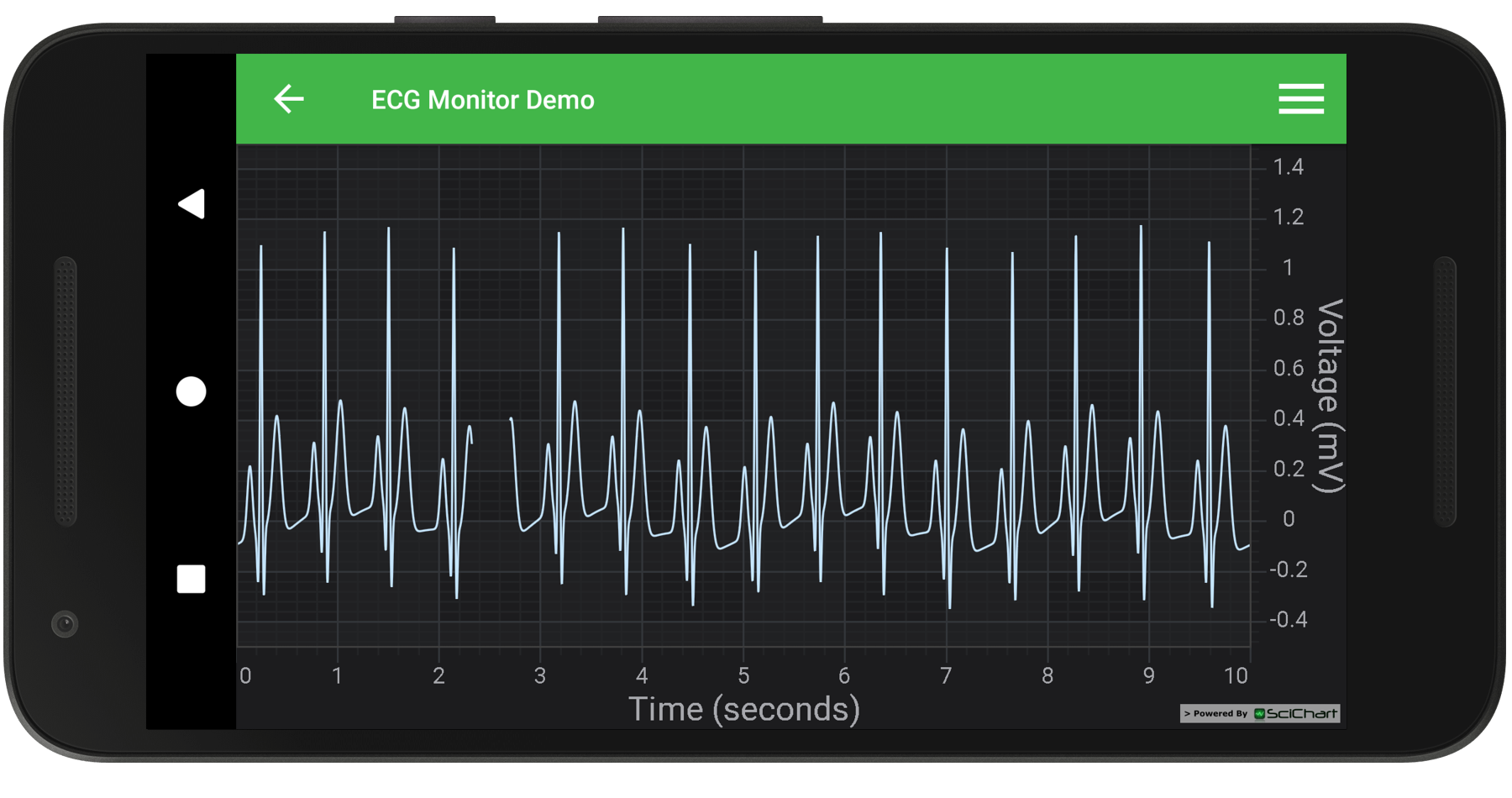Android Chart - Examples
SciChart Android ships with ~90 Android Chart Examples which you can browse, play with, view the source-code and even export each SciChart Android Chart Example to a stand-alone Android Studio project. All of this is possible with the new and improved SciChart Android Examples Suite, which ships as part of our Android Charts SDK.
The ECG Monitor Demo showcases a real-time Android ECG/EKG heart-rate monitor app. A ECG trace is drawn from the left of the screen and when it reaches the right, it sweeps around: an effect which is common in ECG monitors. The example can run indefinitely as the FIFO chart series automatically discards points that are outside the viewport.
Tip!
Sweeping is achieved by overlaying two series, so that when the trace reaches the right edge, it wraps around again to the beginning.
The full source code for the Android ECG Monitor example is included below (Scroll down!).
Did you know you can also view the source code from one of the following sources as well?
- Clone the SciChart.Android.Examples from Github.
- Or, view source and export each example to an Android Studio project from the Java version of the SciChart Android Examples app.
- Also the SciChart Android Trial contains the full source for the examples (link below).


